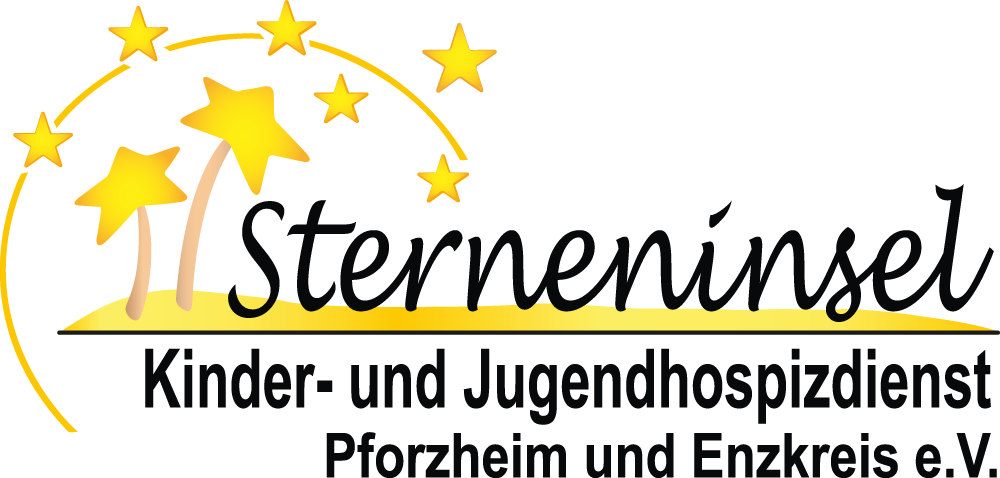The history of the Sterneninsel

Decisive for the history of the origin of the Sterneninsel was the experience that families with children suffering from terminal illnesses urgently need domestic support.
Stimulated by their work in the home care of children, the two children's nurses Angelika Miko and Marion Höhnerlage saw the need to set up a children's hospice service. Together they faced this great challenge. Marion Höhnerlage made it her mission to bring siblings of the hospice children and children from the bereaved families together. The Open Meeting was launched. It was very important to Angelika Miko to break the taboo - illness, dying and death of children and to bring the hospice concerns to the public.
In addition, she always pulled out all the stops to get away from it Sterneninsel Accompanied life-limited ill children or young people to fulfill a special wish. She lived the hospice idea by offering families gentle accompaniment in life, during death and beyond.
With a lot of passion and commitment she led the Sterneninsel 10 years. Then as now is the Sterneninsel indispensable for affected families.
It got its name Sterneninsel by Jonas, a boy with a life-limited illness. He could no longer move due to his muscle disease. All sorts of things were moving in his head. He was very concerned with his illness and the big question of what comes after death. For Jonas, the neologism "Sterneninsel' for three things:
the island as a place of security
the stars as a symbol of infinity
and for Jonah every man who dies became a star.
This is how Jonas became our namesake and inspired our logo.
Jonas 14.01.1996/20.01.2015/XNUMX – XNUMX/XNUMX/XNUMX
She took her first steps Sterneninsel 2009 under the umbrella of the hospice service western Enzkreis eV The following year, a first group of people were qualified who were willing to do voluntary work in the children and youth hospice work.
On January 01.01.2014st, XNUMX the Sterneninsel set up their own association and in the same year moved into their premises at Wittelsbacherstraße 18 in Pforzheim.
Since its beginning was the Sterneninsel used by many families with a sick child or parent. Many children and young people were reached through group and individual bereavement support.
The work with our children and young people is diverse, colourful, very lively and differs in many areas from the work in the hospice service for adults. Our families are often accompanied over long periods of time.
Here is an excerpt from "Living Borders"
A book by Petra Stuttkewitz, she is a doubly affected mother
"Life Values"
“Children are shaped by their parents”
This is not valid for us.
We are shaped by you.
I wanted to teach you my values, wanted to convey to you what is important in life.
But I learned from you
what is most important:
Real feelings
Inner satisfaction
Unconditional Love
acceptance
Enjoy the little things
awareness of life
awareness of dying.”
Petra Stuttkewitz
The Hospice Movement
Hospice – Latin hospitium – means hostel. In the Middle Ages, monks offered pilgrims and travelers accommodation, protection and help in hospices in particularly vulnerable places. In the early days of hospice work (first in the US and England), hospices were hospital-like homes where special care was given to the dying. Today we understand the hospice movement as accompanying the dying and the bereaved.
The idea of the world's first children's hospice came about in Great Britain in the early 1980s. The trigger was a girl named Helen, who was diagnosed with a brain tumor in 1978. It was successfully removed, but Helen's brain was severely and irreparably injured. Sister Frances Dominica, a nun and pediatric nurse, met Helen and her family at the hospital. A close friendship developed and Sister Frances kept visiting Helen. From this friendship with Helen and her family, the "Helen-House Hospice" developed, which started its work in Oxford in 1982 as the world's first children's hospice.
In 1990, six families founded the German Children's Hospice Association with the aim of making such facilities possible in Germany.
In 2022 there will already be 18 inpatient children's hospices and 180 outpatient children's hospice services in Germany. The aim is to ensure comprehensive outpatient care for children and young people as well.
